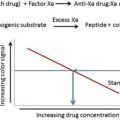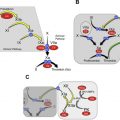Thromboembolism afflicts millions of patients annually in the United States and is associated with a significant cost burden. Oral anticoagulants provide clinicians with options for management of these diseases and their use continues to grow. Accordingly, regulatory, legislative, and nonprofit organizations have set performance standards with the goal of improving patient outcomes, ensuring patient safety, and reducing costs. Recent efforts in quality improvement have introduced changes surrounding regulatory requirements, surveillance, litigation, and oversight that clinicians should be familiar with. This article summarizes key updates related to the management of anticoagulant therapy as it relates to thrombosis prevention and treatment.
Key points
- •
Anticoagulants are a high-risk class of medications and are subject to oversight by many regulatory agencies through collaborative efforts.
- •
Use of electronic health records can improve patient care by providing clinicians with updated health information.
- •
Nationwide efforts are being developed and implemented to improve quality of care and limit the number of adverse drug events associated with anticoagulant drug therapy.
Introduction
Anticoagulation is the cornerstone therapy for thrombosis treatment and prevention. Atrial fibrillation (AF) increases the risk of thromboembolic stroke five-fold. The number of patients afflicted is projected to reach 12 million in the United States by 2050 with health care expenditures estimated to increase to $2.2 trillion. The diagnostic frequency of new and recurrent venous thromboembolism (VTE) is increasing. Corresponding resource use is expected to reach $69.3 billion in annual costs to the health care system. Anticoagulant use is expected to grow for these and other conditions. Anticoagulants are considered high-risk medications. Adverse events with their use are common, often further complicate patient care, lead to higher costs, and compromise trust in providers. Within the US government the Department of Health and Human Services (HHS) is responsible for the delivery of health care and therefore has a stake in fostering advances in medicine, public health, and social services ( Fig. 1 ). Several government agencies exist to regulate and support health care systems. Several nonprofit national organizations exist to communicate and serve as a catalyst for practice change. They have targeted thromboembolism and anticoagulants to improve patient outcomes and enhance safety because many communications have either a delayed or limited impact on clinician behavior and use of health system resources.
This article reviews regulatory and agency efforts related to thromboembolic disease and anticoagulant management with the intent of updating clinicians and highlighting the implications for practice.
Introduction
Anticoagulation is the cornerstone therapy for thrombosis treatment and prevention. Atrial fibrillation (AF) increases the risk of thromboembolic stroke five-fold. The number of patients afflicted is projected to reach 12 million in the United States by 2050 with health care expenditures estimated to increase to $2.2 trillion. The diagnostic frequency of new and recurrent venous thromboembolism (VTE) is increasing. Corresponding resource use is expected to reach $69.3 billion in annual costs to the health care system. Anticoagulant use is expected to grow for these and other conditions. Anticoagulants are considered high-risk medications. Adverse events with their use are common, often further complicate patient care, lead to higher costs, and compromise trust in providers. Within the US government the Department of Health and Human Services (HHS) is responsible for the delivery of health care and therefore has a stake in fostering advances in medicine, public health, and social services ( Fig. 1 ). Several government agencies exist to regulate and support health care systems. Several nonprofit national organizations exist to communicate and serve as a catalyst for practice change. They have targeted thromboembolism and anticoagulants to improve patient outcomes and enhance safety because many communications have either a delayed or limited impact on clinician behavior and use of health system resources.
This article reviews regulatory and agency efforts related to thromboembolic disease and anticoagulant management with the intent of updating clinicians and highlighting the implications for practice.
Overview of organization interactions and performance measures
Nonprofit national organizations, professional organizations, and government agencies work collaboratively to establish evidence-based consensus standards for best practice and develop performance measures to ensure quality health care delivery ( Table 1 ). In 1998, the Joint Commission’s (TJC) introduced the first national quality measurement program and reporting became mandatory for accreditation in 2002. In the time period since, the National Quality Forum and the Centers for Medicare and Medicaid Services (CMS) endorsed and introduced additional quality measures as part of the Hospital Inpatient Quality Reporting (IQR) Program. Beginning in 2004, CMS began withholding payments for hospitals that did not report TJC quality measures to CMS. Many of these are directed at anticoagulation use for thrombosis prevention and treatment ( Table 2 ).
| Organization | Description | Goals and Focus | Measurements |
|---|---|---|---|
| The National Quality Forum | Nonprofit, nonpartisan, membership-based organization that works to catalyze improvements in healthcare. | Convenes working groups to foster quality improvement in public and private sectors. | Endorses consensus standards for performance measurement. |
| The Joint Commission | Nonprofit organization that accredits health care organizations and certifies programs in the United States. |
| The standards focus on critical patient care and organization functions that are essential to providing safe, high-quality care. Each standard is reasonable, achievable, and measurable and expectations for organization performance. |
| Centers for Medicare and Medicaid Services | Federal agency within the US Department of Health and Human Services that administers the Medicare program and works in partnership with state governments to administer Medicaid program. | The Medicare Prescription Drug, Improvement, and Modernization Act of 2003 mandated the Hospital Inpatient Quality Reporting program. This authorized Centers for Medicare and Medicaid Services to pay hospitals that successfully report designated quality measures at higher payment rates, giving hospitals a financial incentive to report the quality of their services. | Hospital quality of care information gathered through the program is available to consumers on the Hospital Compare Web site at: www.hospitalcompare.hhs.gov . |
| Agency for Health Quality and Research | Federal agency within the Department of Health and Human Services that supports research on improving health care quality. | Uses a system of quality indicators to determine the standards of quality health care and if a particular provider is meeting those standards. |
|
| TJC Identifier | NQF Identifier | Description | Measurement |
|---|---|---|---|
| SCIP VTE 2 | NQF 0218 | Surgery patients who received appropriate VTE prophylaxis within 24 hours prior to surgery to 24 hours after surgery. | Surgery patients who received appropriate VTE prophylaxis within 24 hours prior to anesthesia start time to 24 hours after anesthesia end time divided by all selected surgery patients. |
| VTE 1 | NQF 0371 | VTE prophylaxis. | The number of patients who received VTE prophylaxis or have documentation why no VTE prophylaxis was given. |
| VTE 2 | NQF 0372 | Intensive care unit VTE prophylaxis. | The number of patients who received VTE prophylaxis or have documentation why no VTE prophylaxis was given the day of or the day after the initial admission or transfer to the intensive care unit or surgery end date for surgeries that start the day of or the day after ICU admission or transfer. |
| VTE 3 | NQF 0373 | VTE patients with anticoagulant overlap therapy. | Number of patients with diagnosed VTE who received an overlap of anticoagulation and warfarin therapy. |
| VTE 4 | Not applicable | VTE patients receiving unfractionated heparin with dosages/platelet count monitoring by protocol or nomogram. | Number of patients diagnosed with confirmed VTE who received intravenous (IV) UFH therapy dosages AND had their platelet counts monitored using defined parameters such as a nomogram or protocol. |
| VTE 5 | Not applicable | VTE warfarin therapy discharge instructions. | Number of patients diagnosed with confirmed VTE that are discharged to home, home care, court/law enforcement or home on hospice care on warfarin with written discharge instructions that address all four criteria: compliance issues, dietary advice, follow-up monitoring, and information about the potential for adverse drug reactions/interactions. |
| VTE 6 | Not applicable | Hospital acquired potentially-preventable VTE. | Number of patients diagnosed with confirmed VTE during hospitalization (not present at admission) who did not receive VTE prophylaxis between hospital admission and the day before the VTE diagnostic testing order date. |
| STK 1 | NQF 0434 | VTE prophylaxis. | Ischemic and hemorrhagic stroke patients who received VTE prophylaxis or have documentation why no VTE prophylaxis was given on the day of or the day after hospital admission. |
| STK 2 | NQF 0435 | Discharged on antithrombotic therapy. | Ischemic stroke patients prescribed antithrombotic therapy at hospital discharge. |
| STK 3 | NQF 0436 | Anticoagulation therapy for atrial fibrillation/flutter | Ischemic stroke patients with atrial fibrillation/flutter who are prescribed anticoagulation at discharge |
TJC has implemented several changes to the performance measure requirements. These efforts were designed to provide hospitals with greater flexibility and to further align TJC reporting standards with those of CMS. Today most health care institutions collect performance measures through a quality department, often with assistance from a survey or analytics vendor. There is a choice of measures to report, with the stipulation that these measures are applicable to the services provided and patient populations served by the hospital. Institutions may report using chart-abstracted measures, electronic Clinical Quality Measure (CQM), or a combination of both. This information flows to TJC and CMS and ultimately should return to practicing clinicians as a method of identifying areas of practice improvement ( Fig. 2 ). Hospital participation in the CMS IQR Program has increased to greater than 99% of all acute care hospitals since CMS introduced the financial penalty. Hospitals that do not comply with these reporting standards are subject to loss of TJC accreditation and CMS penalties. For fiscal year 2016, CMS has altered the payment structure. Hospitals that participate in the IQR Program and are submitting electronic CQM records will receive a 0.9% increase in operating payment rates. In addition, the market basket rate (an adjustment for inflation of costs incurred by hospitals during the provision of patient care) will be 2.4%. However, the market basket rate will be 25% lower (1.8%) for hospitals that are noncompliant with CMS reporting standards.
Targeted performance standards
Stroke Management Standards
The American Stroke Association, American Heart Association, Agency for Health Quality and Research (AHRQ), American Speech-Language-Hearing Association, Centers for Disease Control and Prevention, and TJC collectively crafted 17 performance standards with a goal of improving care quality, ensuring accountability, and providing information to the public. Within the standards, several measures specifically address VTE prevention and safe anticoagulant use (see Table 2 ). Surveillance research has suggested that similar practice standards improve performance measure adherence, early anticoagulant use, and prescription at discharge. A recent review of stroke care showed a significant improvement in quality of care metrics. Designated primary stroke centers have shown improved compliance with performance measures but with room for further improvement. However, a recent review evaluating compliance with stroke standards suggests patient outcome data are limited.
Stroke severity varies considerably among patients and is a key determinant of patient outcomes despite established evidence-based guidelines and endorsed standards. The value of performance standards and measurements require more study and therefore clinicians should be prepared to further evaluate the relationships between quality metrics and patient outcomes.
Surgical care improvement projects
CMS, after collaboration with other government agencies, professional organizations, and regulatory agencies, implemented the Surgical Care Improvement Project (SCIP). The project included a goal of reducing VTE-related events by 25% in patients undergoing surgical procedures. Despite evidence-based guidelines for VTE prevention strategies, VTE prophylaxis is often underused. SCIP introduced two methods for improving VTE prophylaxis utilization. The first measure assessed whether VTE prophylaxis was ordered and the second measured whether prophylaxis was received, both within 24 hours after surgical procedure (see Table 2 ). The CMS “pay for performance” structure prompted hospitals to implement the SCIP measures and comply with TJC surveys and the National Quality Forum–endorsed measures. Similar to stroke measures, the SCIP VTE prophylaxis adherence rates have improved. However, there still are limited data demonstrating that adherence reduces VTE event rates.
The actual incidence of postoperative VTE, the optimal duration for observation, and the level of surveillance applied to detect events remains controvesial. The in-hospital rates of VTE in patients receiving appropriate thromboprophylaxis after hip and knee arthroplasty were estimated recently at approximately 0.5% and 1% of patients, respectively. The authors have proposed using these rates as an indicator for safety and quality. SCIP VTE events are based on the application of International Classification of Diseases, Ninth Edition, Clinical Modification (ICD-9-CM) hospital discharge codes. The accuracy of this methodology has been challenged. Furthermore, the period of postoperative VTE risk extends well beyond hospitalization in hip (10–12 weeks) and knee arthroplasty (4–6 weeks). Three-month VTE incidence rates reflect the longer period of VTE risk and may be a more appropriate observational period for quality improvement measures. A recent study that evaluated the association of adherence to SCIP thromboprophylaxis protocols and VTE rates found that hospitals that consistently adhered to VTE reduction protocols had higher rates of VTE, primarily because of increased surveillance and imaging use.
Although interhospital comparisons may be inappropriate alternative options for VTE monitoring, standards for when to image, screening all patients during hospitalization, and development of new, more accurate VTE measures may not be feasible. The existing measures still offer important information for evaluating performance and practices with a single facility. Data collection, identifying events, and segregating higher risk patient populations afford an opportunity for improvement-targeted VTE prevention interventions. These data may help identify low-risk patients for whom prophylaxis offers no benefit. It may also identify high-risk patients with breakthrough thrombosis despite seemingly adequate prophylaxis who may require combination preventive strategies.
Point scoring systems
Hospital Acquired Conditions Reduction Program
HHS is required to identify high-cost, high-volume conditions that result in a higher hospital payment, but could have been prevented by the application of evidence-based guidelines. CMS developed a list of hospital-acquired conditions (HACs) that are considered preventable events if not present on admission. Included was deep vein thrombosis (DVT) or pulmonary embolism (PE) following total hip or knee replacement. Although a patient’s initial stay was eligible for CMS reimbursement, hospitals no longer received reimbursement for the additional expenses associated with hospital-acquired DVT or PE. In 2009, the Patient Protection and Affordable Care Act established the HAC Reduction Program, which eliminated CMS payments for HACs and introduced a point scoring system to provide an incentive for hospitals to reduce these events. A total HAC point score ( Fig. 3 ) is calculated for each hospital based on performance on AHRQ Patient Safety Indicators (PSI). Included in the point score is the incidence of postoperative DVT and PE. CMS payments are then determined based on a hospital’s total HAC point score and their comparison with the HAC score of other hospitals. HAC point scores are publicly available on the Hospital Compare Web site. In 2015, approximately 724 hospitals nationwide received a 1% reduction (penalty) in Medicare payments for poor HAC-related outcomes.
HHS has recently reported the improvement in patient outcomes from the program, estimating 50,000 deaths averted and $12 billion in spending avoided over the time period of 2010 to 2013. Postoperative VTE was reduced from 28,000 events in 2010 to 23,000 events in 2013. This 18% reduction in events was estimated to have avoid 520 deaths and saved the US health care system approximately $40 million. HHS attributed the success to payment policies, public reporting of hospital performance, and the assistance from nonprofit organizations.
Hospital Consumer Assessment of Healthcare Providers and Systems and the Five Star Quality Rating System
CMS established the Hospital Consumer Assessment of Healthcare Providers and Systems (HCAHPS) rating to give consumers easily accessible information on the patient experience. The system uses an 11-measure patient survey tool ( Table 3 ) to generate a final score. The score is intended to help patients compare health care providers and systems. Patients treated on anticoagulation therapy have been shown to have increased satisfaction with patient education and care coordination when care is directed by an anticoagulation management service. Because warfarin patient and family education is mandated by TJC standards, there is an opportunity to impact HCAHPS scores surrounding the elements patient satisfaction and quality of care. The HCAHPS score is a component of the CMS Value Based Purchasing Program, which effects Medicare reimbursement. The CMS new Overall Hospital Quality Star Rating System (OHQSRS) is designed to make comparative health care information more accessible to patients. OHQSRS incorporates a hospital’s IQR performance and PSI measures, and Outpatient Quality Reporting program data ( Fig. 4 ). The rating consolidates 75 measures into a single, easy to interpret five star rating system that will be available on the CMS Hospital Compare Web site. Consumers and patients in the past have stated that most past rating systems are difficult to interpret. The system measures include outcomes (mortality, readmissions, safety), process of care delivery (timeliness, effectiveness), patient experience, and efficiency. The implementation of OHQSRS has been delayed until July 2016 to allow CMS additional time to communicate to providers and make any final methodology adjustments.







